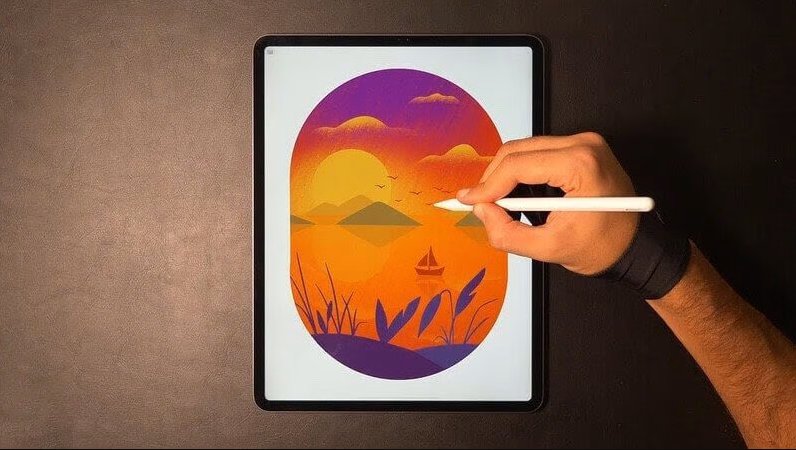Why Africa needs More Digital Illustrators

Years ago, there were just a handful of digital illustrators in Africa. Today, the emergence of NFT has inspired the growth of digital illustration in Africa. In industries like finance, business, communication, and agriculture, the role and effects of the digital revolution have been widely praised and well-documented. While the utilitarian applications of digital technology have been extensively studied, the aesthetic applications of digital technology and its contribution to the growth of creative practices in Africa have garnered less attention.
African digital arts have proliferated in the 21st century thanks to modern internet culture. The traditional visual imagery used to interpret, show, explain, and/or decorate the text in books and newspapers has evolved into something else. It has evolved into illustrations you see on websites and apps to make them more user-friendly.
While artists have helped one another, African illustrators need infrastructure that is on par with that of the traditional art world. If more work is put into overcoming the obstacles in the way of the African digital art ecosystem’s growth, it could expand even more.
Basically, the wider audience has persuaded a lot of African illustrators and art world experts that it’s critical to pay attention to the kinds of art they release into the world. People have frequently said that the NFT craze at the beginning of this year was motivated by money rather than the caliber of the art. While this is valid, it is not applicable to every artist.
Why More Digital Illustrators?
About 500,000 individuals are reportedly employed in Africa’s cultural goods industry. The industry brings approximately $4.2 billion annually. By enabling them to connect with audiences around the world, digital platforms are fostering the growth of musicians, performers, and other creatives. The divide between the inventive economies of developing nations and global markets is being closed by digitization.

Artificial intelligence (AI) has developed and evolved along with digital artistic creation, from algorithms to creative intelligence to deep learning. Machine learning, or more specifically, self-learning models that consume data sets, is the primary method by which artificial intelligence manifests in art. These models include deep learning techniques, which allow a machine to learn on its own by mimicking human neural networks while being directed by rules.
A digital illustrator is able to conceive and express himself from a specific context. Digital illustration is a major disruptive force, capable of creating a photorealistic version of almost anything. Artists are no painting without the brush, there’s so much goodness in that.
Marketing
The use of photographs in digital marketing is now a common occurrence. When attempting to demonstrate or illustrate a point, people have a natural tendency to employ pictures. They are more able to convey narratives than words ever could. Using vibrant imagery in marketing will assist enhance the message when used with illustrations. This makes the brand more clear to and appealing to the consumer.
Illustrations are adaptable and can be used in a variety of campaign kinds. Creativity is key in modern advertising. Using illustrations can help you express your creativity. A excellent example would be compelling images and pictures that can be customized. They can be utilized in a variety of marketing techniques.
The online environment can seem so impersonal. Illustration gives content a more human touch, especially when it appears to have been drawn by hand. You’ll likely see more websites and apps utilizing illustration in their icons, error pages, and accompanying login pages to make them feel friendlier and joyful.
Film and Entertainment
The African creative industries have been greatly impacted by the digital revolution, not only in terms of creation but also, and this is crucial, in terms of display and diffusion of art. For example, the growth of Africa’s popular film industries through the video-film craze has been fueled by digital technology. Affordably priced digital cameras and desktop editing programs have made it possible for this style of filmmaking to spread across the continent.
This is also apparent in a number of African art forms and creative works that are audio-visual, graphic, and literary, with digital technology having played a significant part in the spread of content creation and opening up access to African art to a wider audience.
Concept illustrators create the visual design for a thing, character, or full planet that doesn’t yet exist before a television or movie show goes into production. Today’s video games and fantasy movies are good examples of this. Some of our favorite animated movies also employ visual illustrations. The next time you wonder why Africa hasn’t fully embraced animated television and movies, just know that the region may be lacking illustrators needed for the job.
NFT
In October 2021, Nigerian artist Osinachi made history by becoming the first African crypto-artist to sell his non-fungible tokens (NFTs) at Christie’s Europe. The 30-year-old former librarian was dubbed “the most renowned African crypto-artist” by the media following the $68,000 sale of digital “paintings” created in Microsoft Word.
Unquestionably, the enormous sales of artworks packaged as NFTs at the start of the year sparked collectors’ interest in investing and artists’ expectations of a gold rush. The total amount of NFT sales in the art area increased from about $20 million in 2020 to $2.57 billion in 2021.
Volumes are still increasing even if the market for NFTs is not expanding as quickly as it once did. The overall value of NFT transactions as of this point in 2022 is $687 million each week, an increase of more than 10% from the fourth quarter of 2021. The NFT market is expected to reach a value of $122.43 Billion by 2028, at a CAGR of 34.10% over the forecast period (2022 – 2028). This is an opportunity that African creators must not miss.
